Abstract
Preharvest sprouting of wheat (Triticum aestivum L.) is associated with inadequate seed dormancy. Although abscisic acid (ABA) has often been suggested to play a central role in developing seed, its involvement in dormancy of mature seed lacks firm experimental evidence and endogenous ABA levels are not well correlated with germinability. We examined genotypic and temporal variation in wheat seed and embryo germination responses to ABA and determined whether differential sensitivity of embryos to ABA extended to growth of embryo-derived calli. Germination of Parker 76 caryopses, which have little dormancy at maturity, was only slightly inhibited by ABA, whereas germination of Clark's Cream, a highly dormant genotype, was greatly inhibited. Responsiveness of caryopses to ABA and dormancy of seeds decreased concurrently during afterripening. Germination of embryos excised from dormant and nondormant seeds was more responsive to ABA but otherwise was similar to that of caryopses, indicating that differential response to ABA occurs in the embryo. Growth of calli derived from immature embryos of two sprouting-susceptible wheat genotypes exceeded growth of calli from Clark's Cream, but no distinct differences in response to ABA among the genotypes were apparent. We concluded that the action of ABA is similar in developing and mature seeds, that genotypic and temporal variation in embryo responsiveness to endogenous ABA may be involved in dormancy, and that ABA probably acts in concert with other endogenous constituents.
Full text
PDF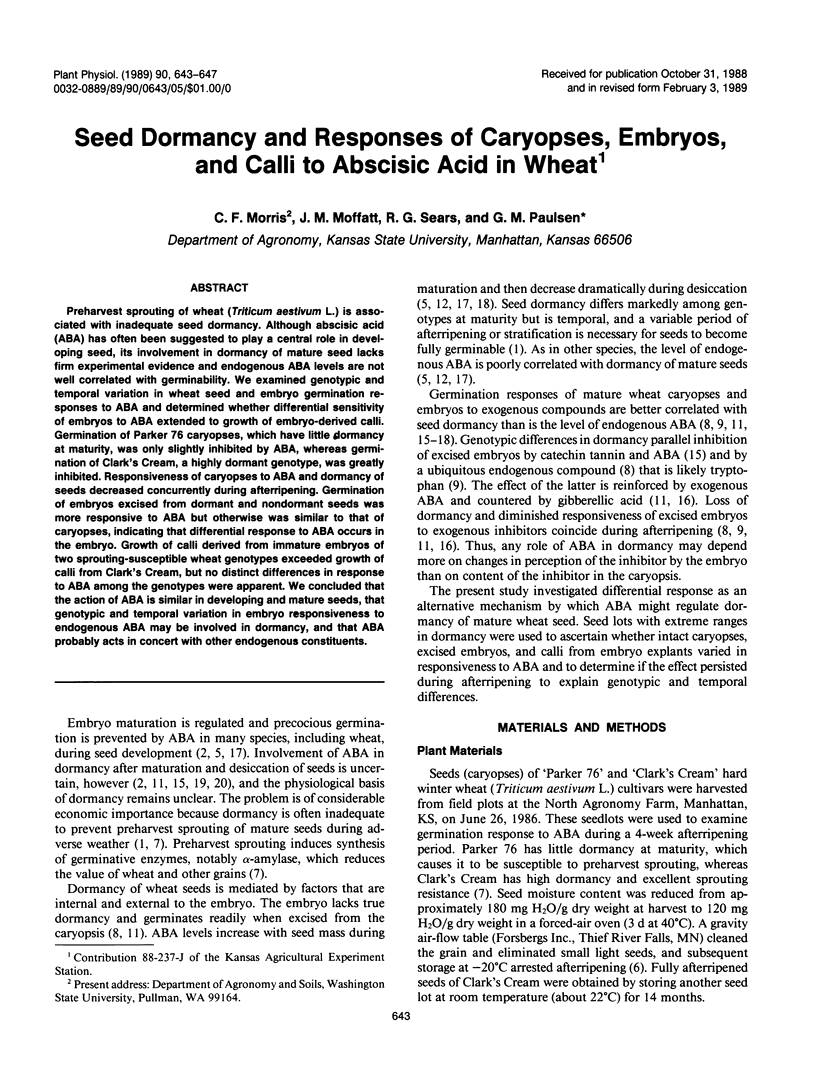
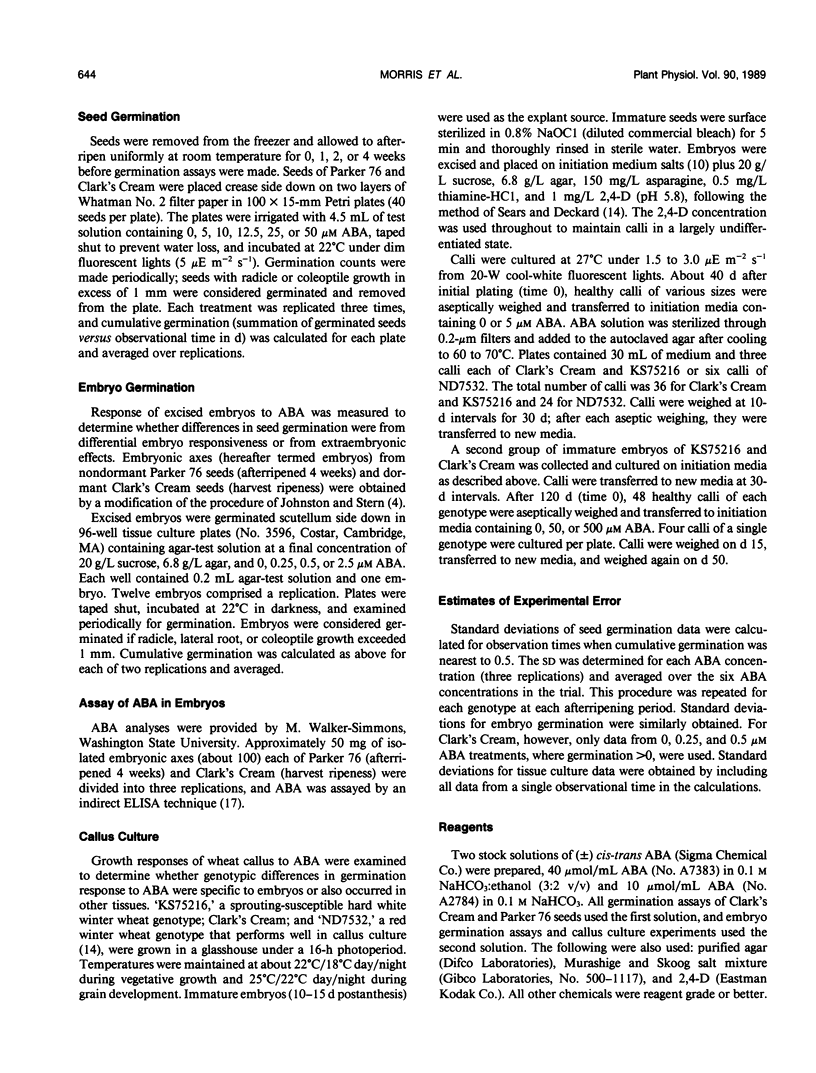
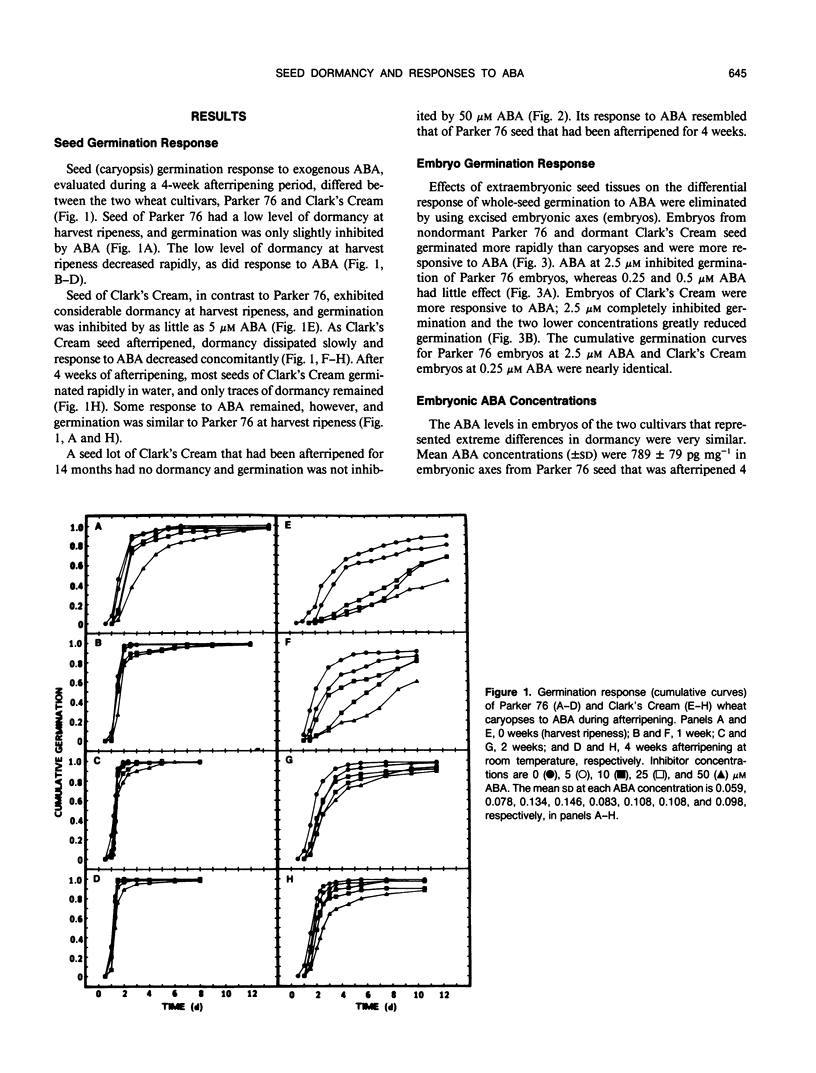
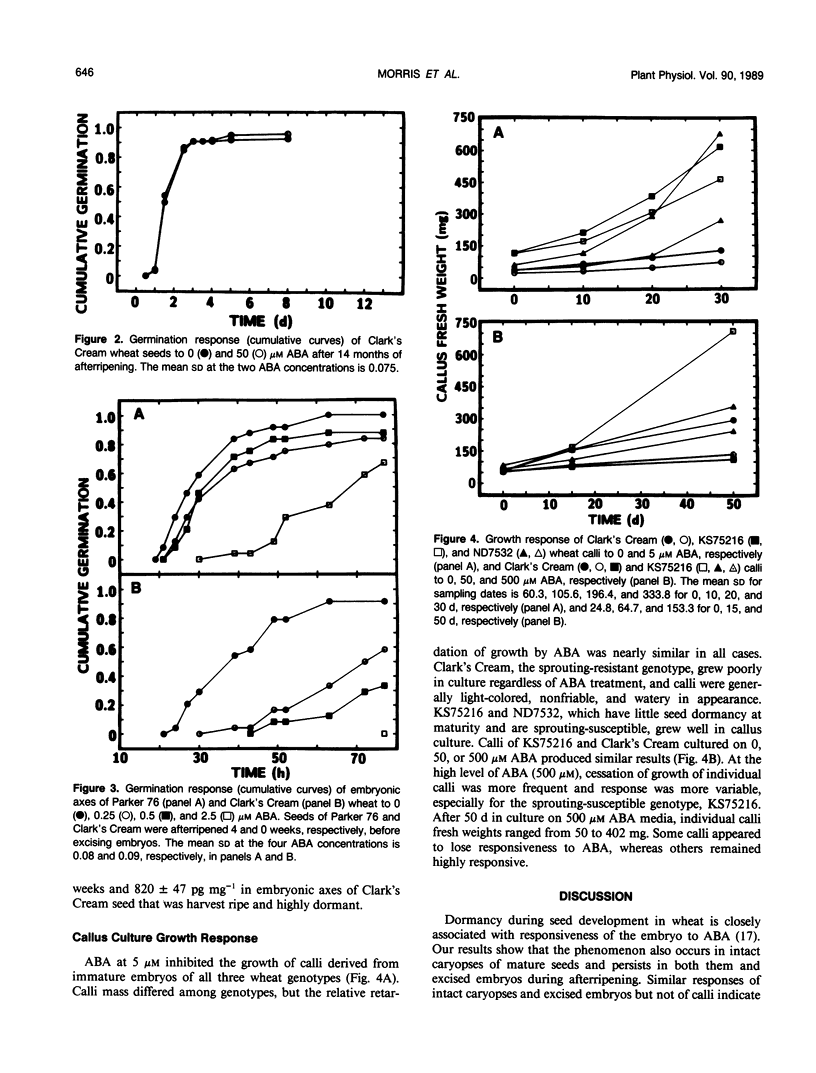
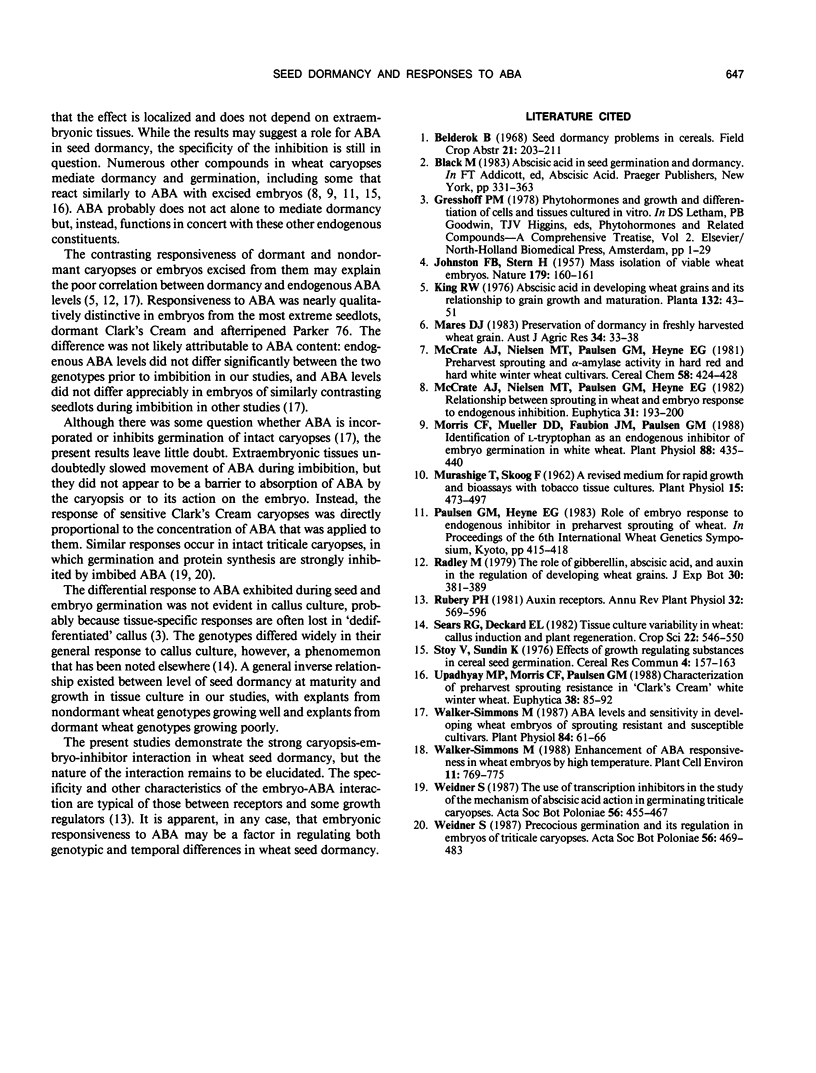
Selected References
These references are in PubMed. This may not be the complete list of references from this article.
- JOHNSTON F. B., STERN H. Mass isolation of viable wheat embryos. Nature. 1957 Jan 19;179(4551):160–161. doi: 10.1038/179160b0. [DOI] [PubMed] [Google Scholar]
- Morris C. F., Mueller D. D., Faubion J. M., Paulsen G. M. Identification of l-Tryptophan as an Endogenous Inhibitor of Embryo Germination in White Wheat. Plant Physiol. 1988 Oct;88(2):435–440. doi: 10.1104/pp.88.2.435. [DOI] [PMC free article] [PubMed] [Google Scholar]
- Walker-Simmons M. ABA Levels and Sensitivity in Developing Wheat Embryos of Sprouting Resistant and Susceptible Cultivars. Plant Physiol. 1987 May;84(1):61–66. doi: 10.1104/pp.84.1.61. [DOI] [PMC free article] [PubMed] [Google Scholar]


